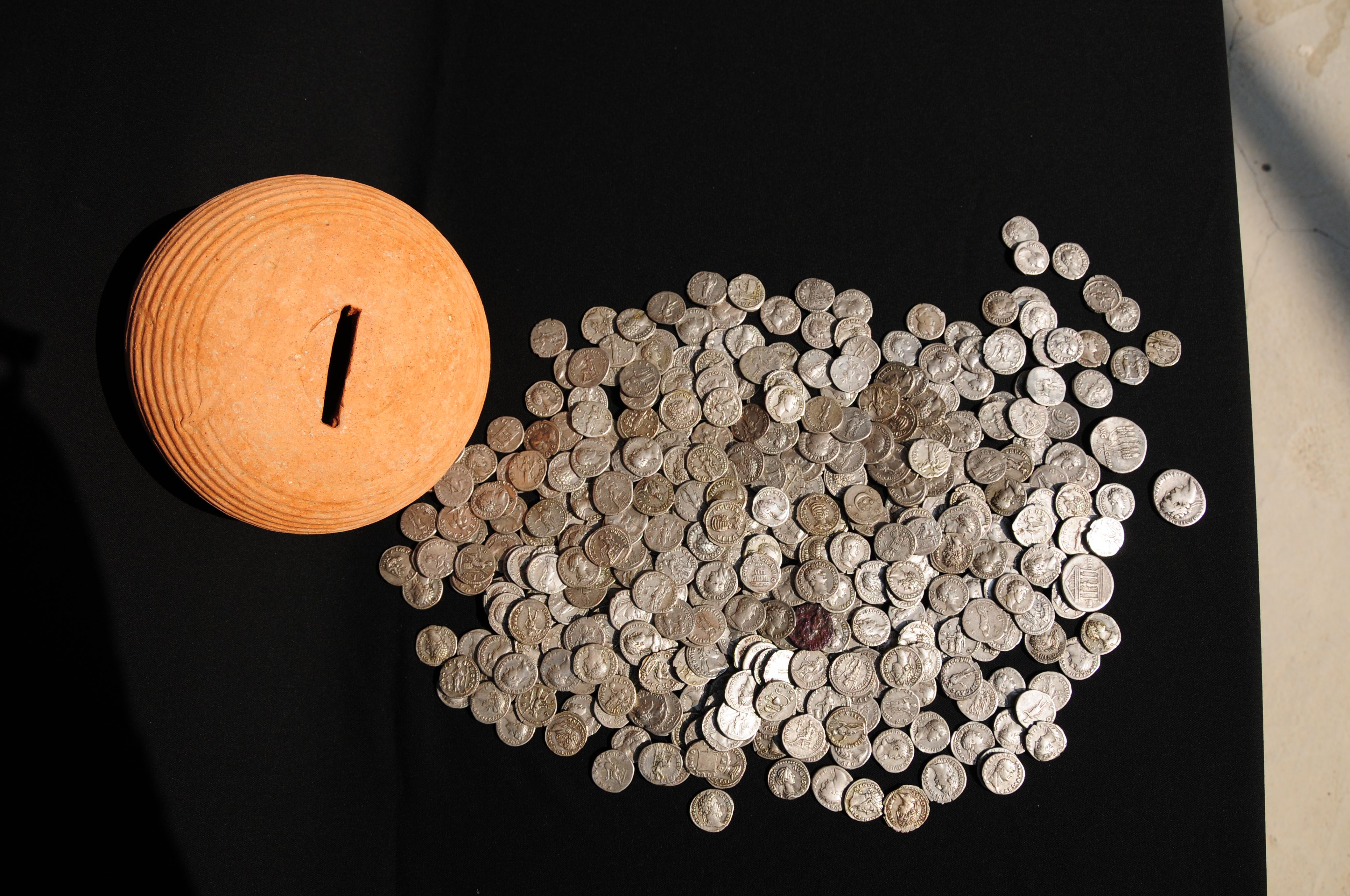Roman coins online:
global research collaboration

Many millions of coins survive from the Roman Empire, spread across collections worldwide. Digital data and images have transformed researchers’ ability to work with these collections, adding to our understanding of the Roman Empire.
These collections are a great store of information about the distribution of Roman economic power. They can tell us about representation of the Empire and Emperors, the response of the cities to the establishment of a new political order, the internal history of the cities, and the role of the provincial coinage in the economy of the Roman Empire as a whole.

Provincial coins from the Roman Provincial Coinage website.
Provincial coins from the Roman Provincial Coinage website.
The Ashmolean’s Heberden Coin Room houses a systematic and comprehensive collection of some 300,000 coins and medals, with strengths in the fields of Greek, Roman, Celtic, Byzantine, Medieval, Islamic, Indian and Chinese coinages. It also holds collections of paper money, tokens, jetons, and commemorative and art medals. The Ashmolean has been working to digitise its own coins for some time, and it provides search tools with access to the digitised images. The team has also trialled new technologies into its work, including testing machine learning to identify coins.
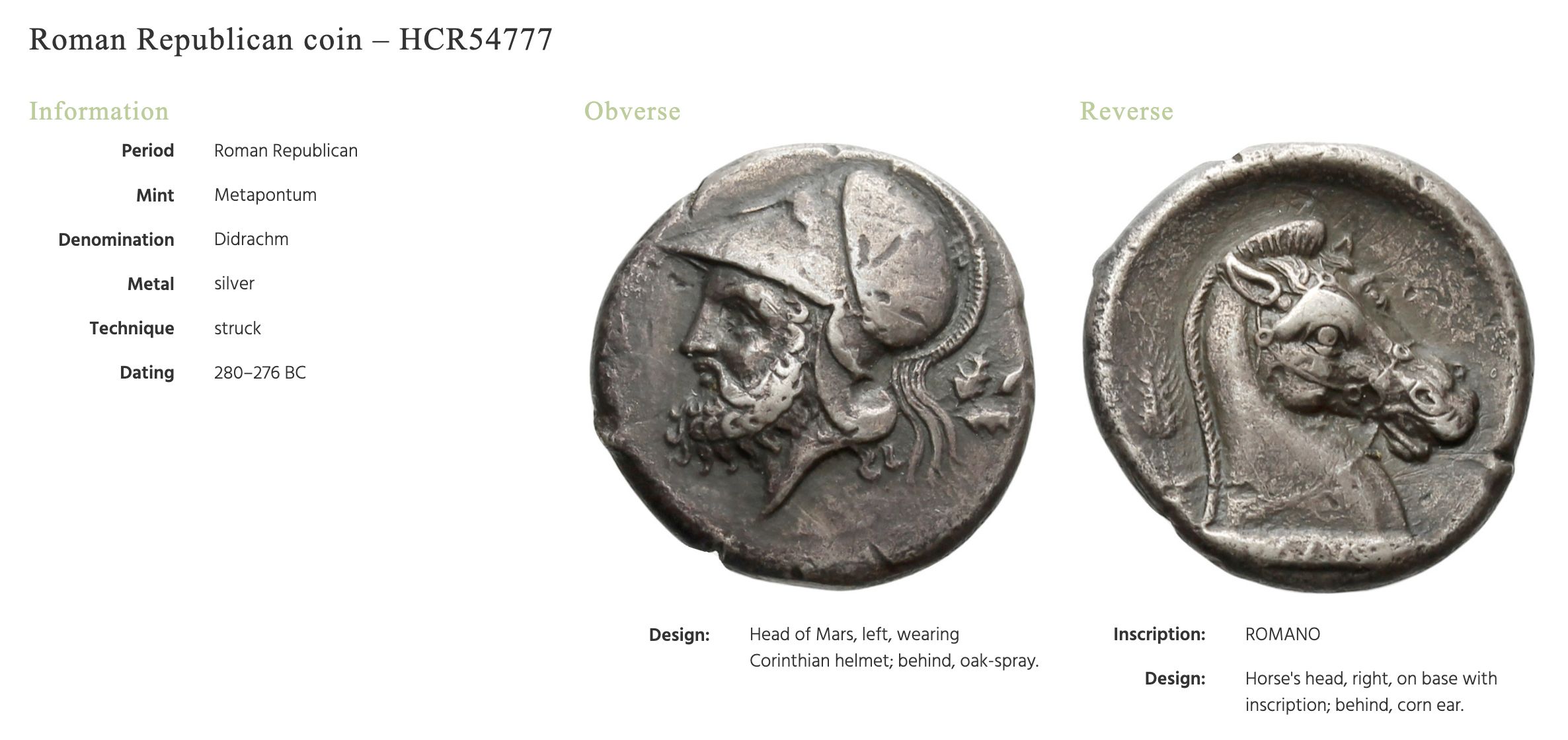
Detail from the Asmolean's Heberden Coin Room website.
Detail from the Asmolean's Heberden Coin Room website.
The Heberden Coin Room is a globally renowned centre for the teaching of numismatics – the study of coins – and monetary history. It is also a leading research centre running two major research projects which make use of digital tools to create databases that bring together coin data from around the world and allow for the integration of numismatic studies into broader historical and cultural studies.
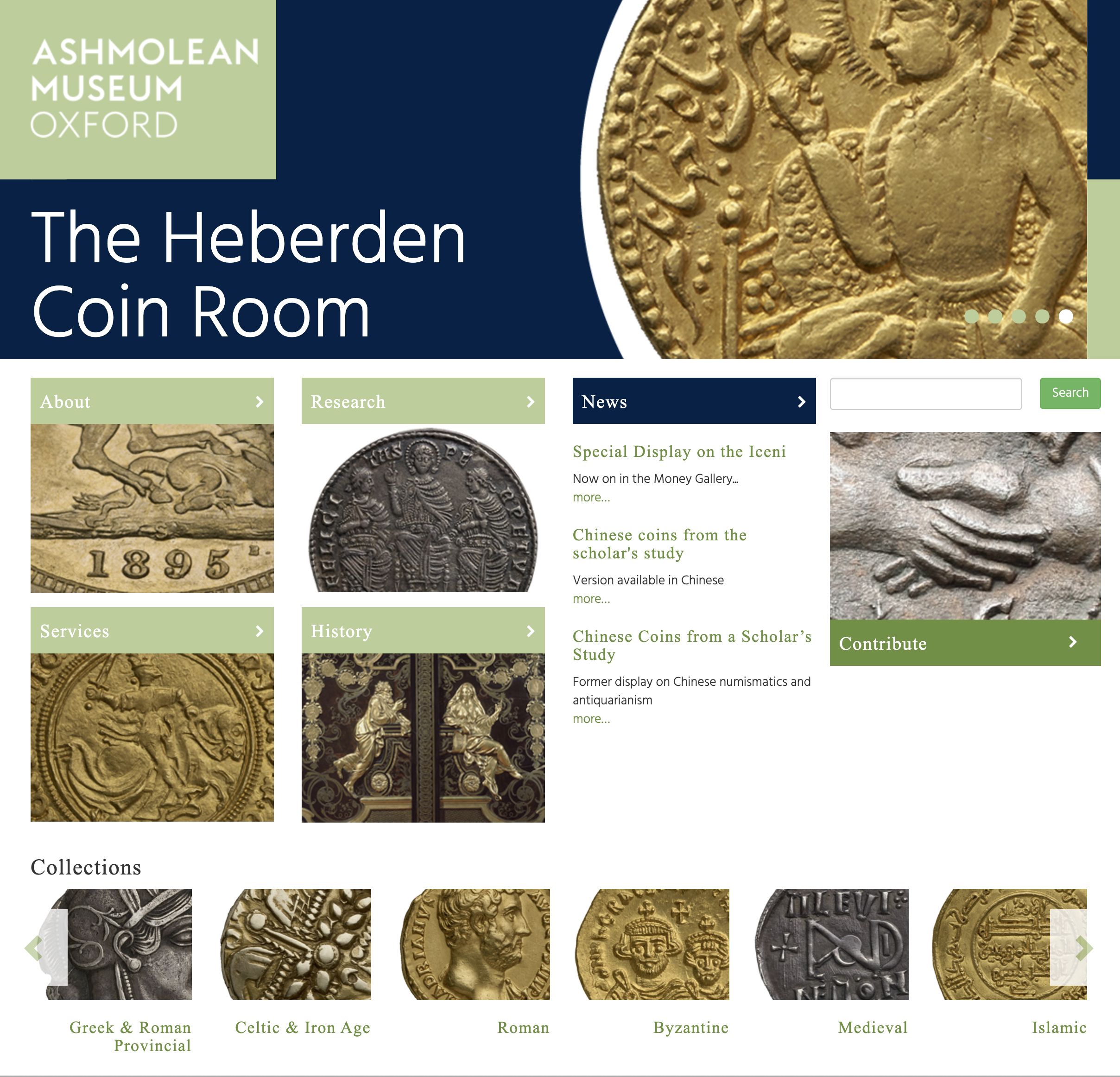
The homepage from the Asmolean's Heberden Coin Room website.
The homepage from the Asmolean's Heberden Coin Room website.
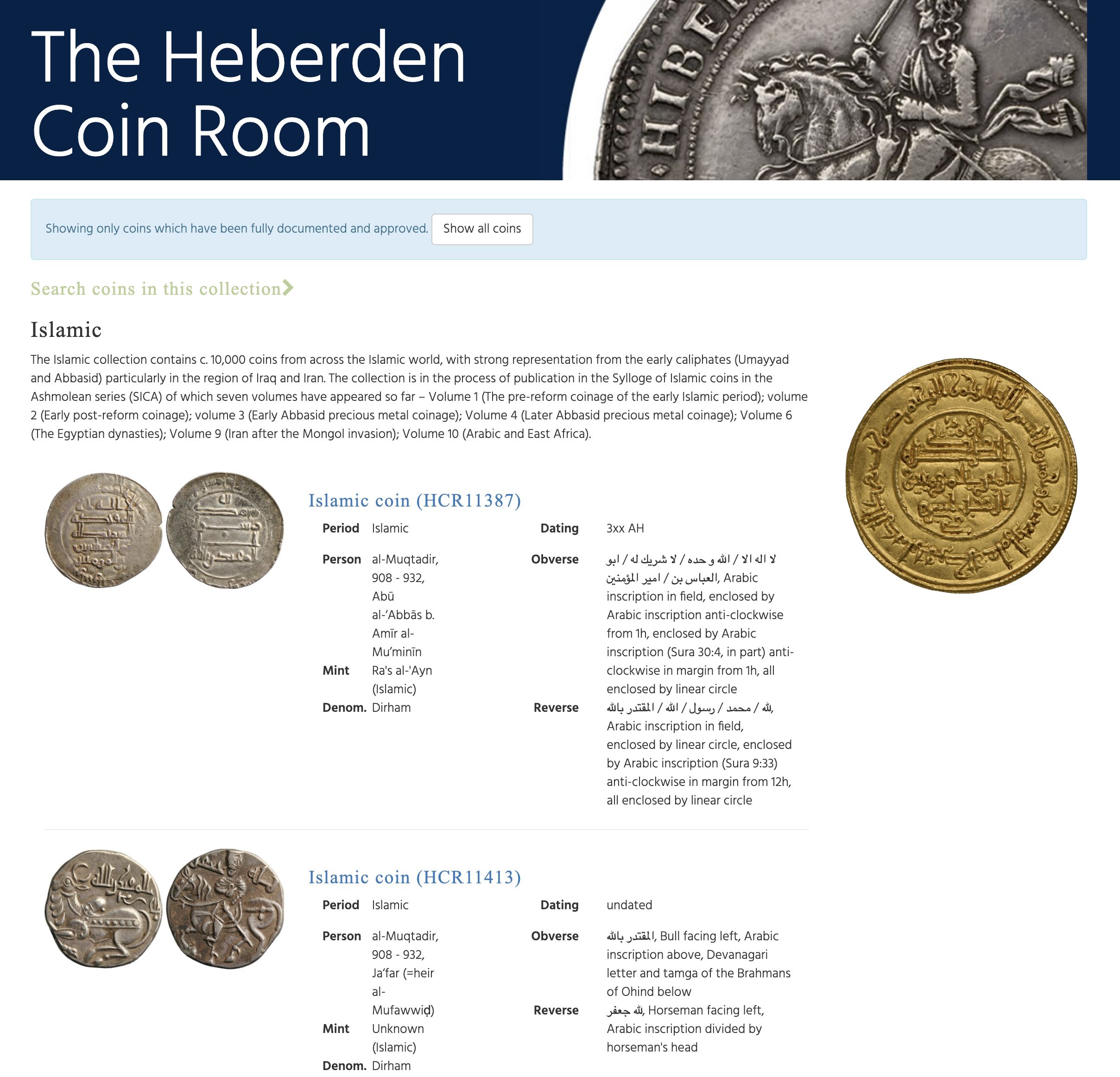
A page from the Asmolean's Heberden Coin Room website showing Islamic coins.
A page from the Asmolean's Heberden Coin Room website showing Islamic coins.
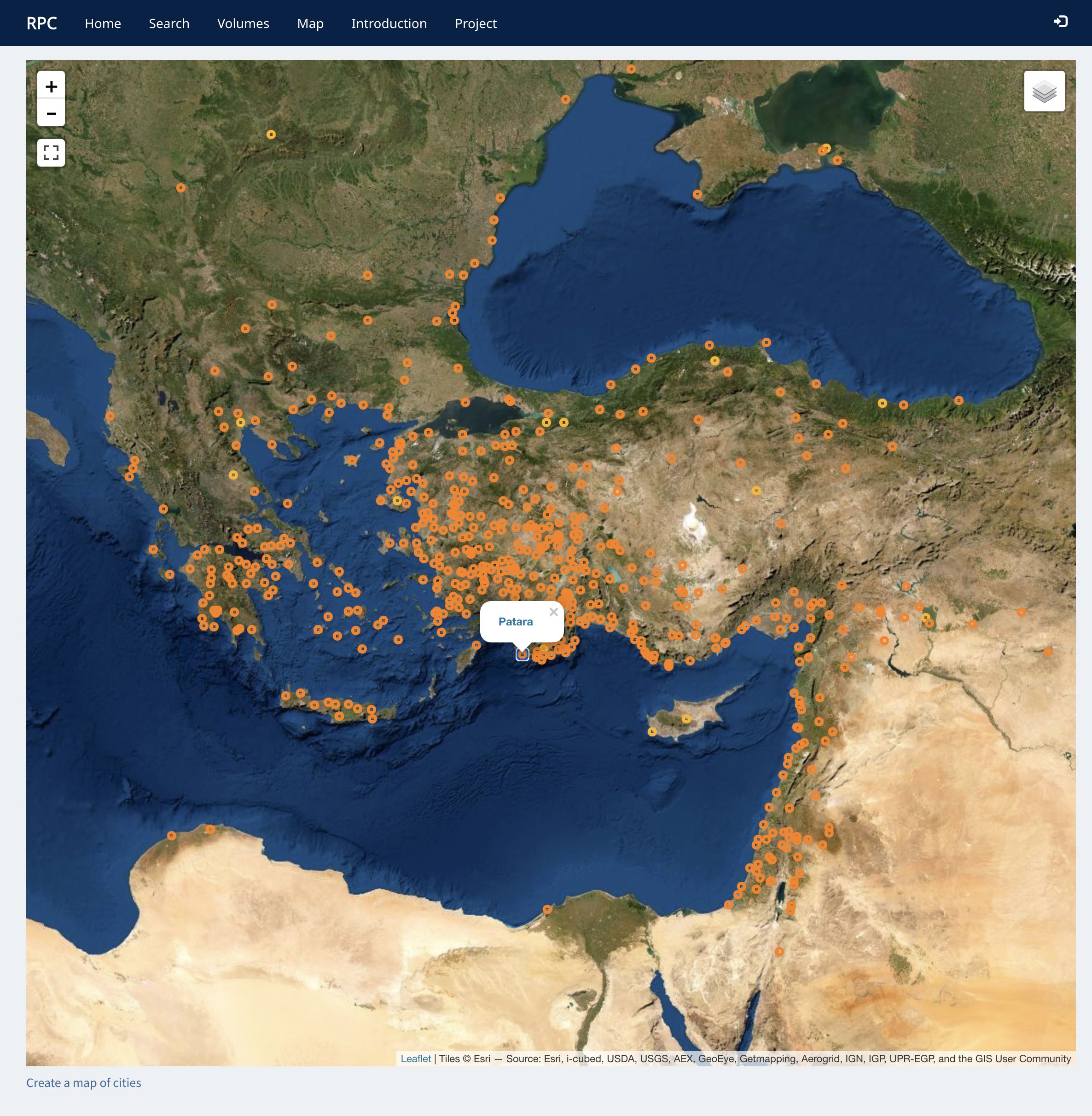
A map from the Roman Provincial Coin Online Project website showing coin locations.
A map from the Roman Provincial Coin Online Project website showing coin locations.
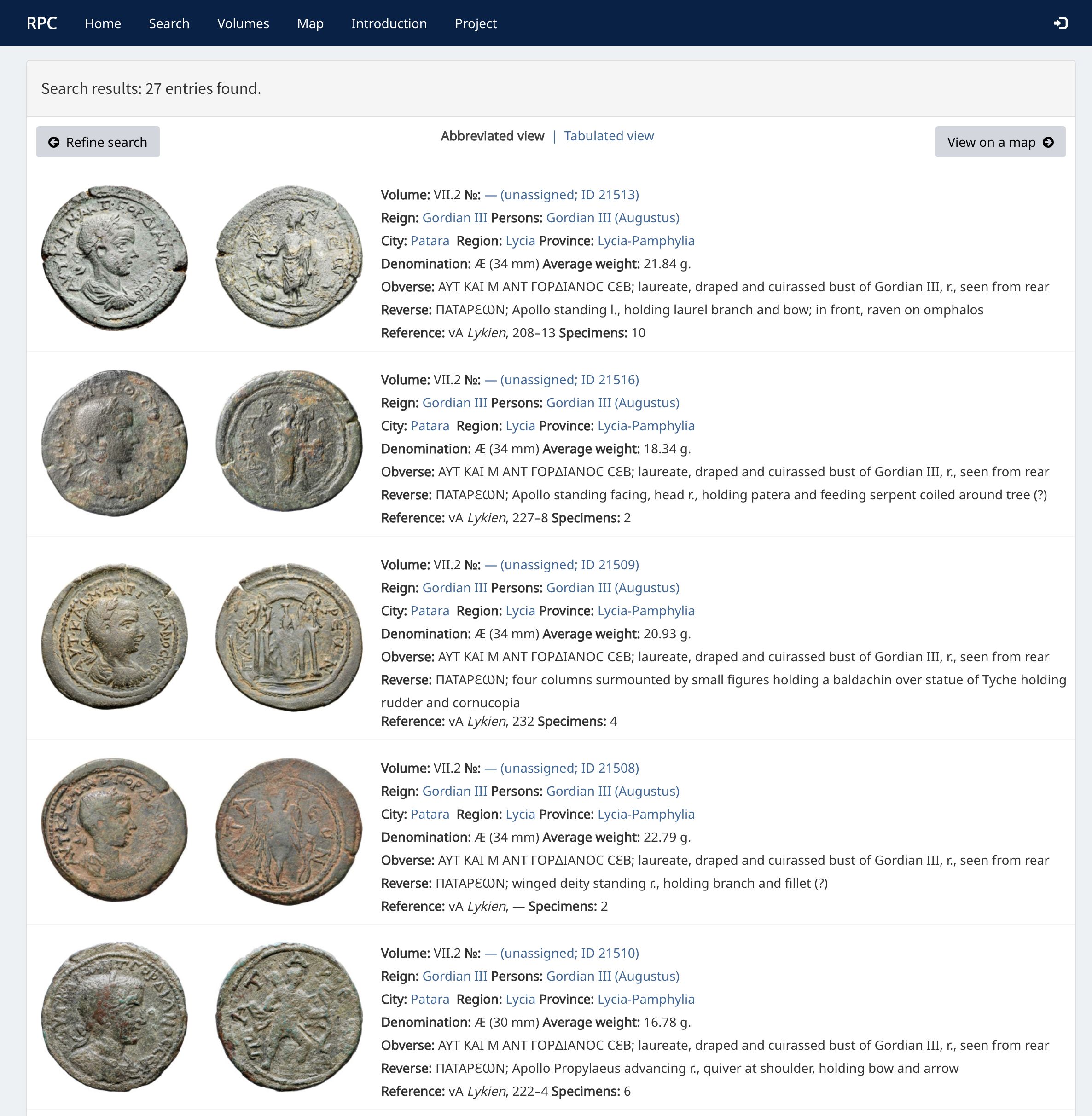
A page from the Roman Provincial Coin Online Project website showing search results.
A page from the Roman Provincial Coin Online Project website showing search results.
The Roman Provincial Coin Online Project (RPC) is currently one of the most important research projects in numismatics. The project is generating invaluable information about how the Roman Empire established power and governed – and how the provinces responded. It embodies a new approach to Roman coinage, giving the first authoritative account of the coins minted in the provinces of the Empire.
RPC online currently includes more than 400,000 coins, representing 70,000 types. In recent years, the website received over 3 million page views per year from over 40,000 different users around the world – a clear demonstration of the impact of this research project beyond academia.
The Coin Hoards of the Roman Empire project is creating an online resource that aims to document all coinage in use in the Roman Empire between 30 BC and AD 400, demonstrating the value of digital data and collections in facilitating research collaborations among disparate experts. The project hopes to help integrate this data into broader research on the Roman economy. It has already gathered records for 16,400 hoards from Ireland to Sri Lanka, comprising a staggering 6 million coins.
The project has pioneered collaborative online working, putting together a team of 50 collaborating institutions from 25 countries, and has already involved 20 graduate students internationally. The project provides a picture of coin circulation and of the Roman economy that was unthinkable even a few decades ago.
